As the lofts on irons get stronger to cope with the faster faces, then the distance gap between the set wedge and the first specialist wedge increases.
A set wedge can be anywhere from 44° to 50° and specialist wedge manufacturers now start their ranges from 46° so I thought I would investigate how you decide to crossover from one to the other and also which shaft should you use.
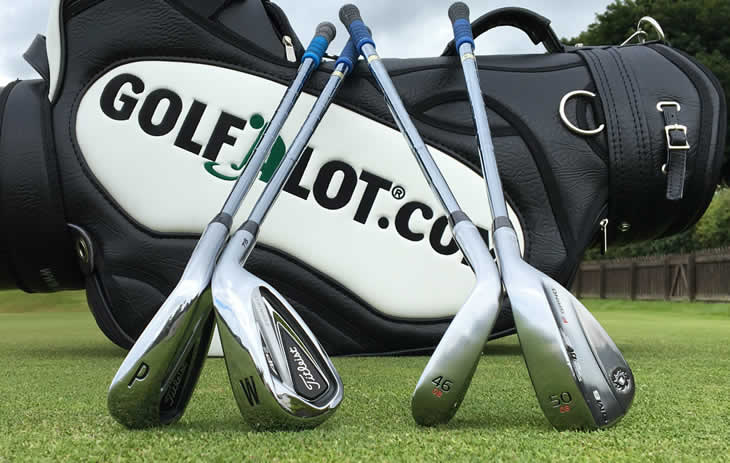
Before we get into swing data, it is important to understand the differences in construction between a typical cavity back iron and a blade style specialist wedge.
Using the Titleist 716 AP2 as an example, it is a cavity back iron where the centre of gravity is slightly further back from the face than the equivalent Titleist Vokey SM6 wedge.
The set wedge will generally have a thicker top line and a different face profile that will be longer with a lower toe profile.
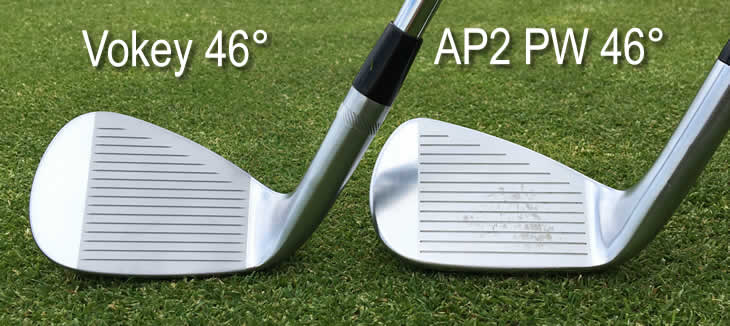
However this is about making a decision based on performance rather than looks, because at the end of the day it is getting the best combination of clubs for your game. Using the Titleist clubs above I looked at which would make the best Pitching Wedge and Gap Wedge.
All the clubs were subjected to a distance and accuracy test on the SkyTrak launch monitor, short game test around the green and a playing test on the course.
Choosing The Right Pitching Wedge
To ensure it was a fair test of the 46° clubs, the Titleist AP2 set wedge and Vokey SM6 wedge came with a True Temper Dynamic Gold S300 shaft in the same length and lie as I had been custom fitted for my irons. If you are predominantly hitting full shots with your specialist wedge then this makes sense to keep the consistency.
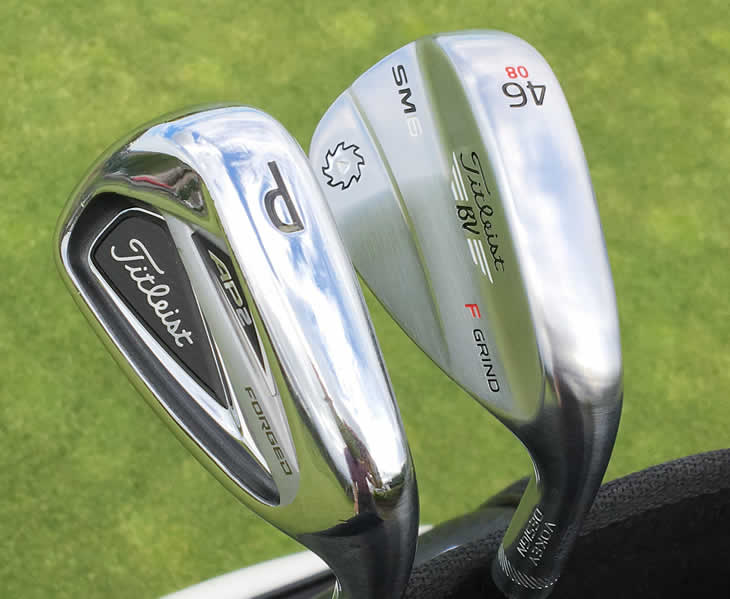
On the launch monitor for full shots the AP2 had the edge by a couple of yards on distance and that is due to its head construction, but that does not mean that it wins.
The deeper centre of gravity launches it fractionally higher and the less aggressive grooves impart less spin, so it is that combination that creates more carry and more roll. How much spin you generate and need to bring the ball to a halt will determine which is best for you, as the higher spinning Vokey will stop quicker on the green than the AP2.
The trade off is that the Vokey is going to be a touch less accurate as the blade style does not have as much forgiveness as the AP2 with its peripheral weighting.
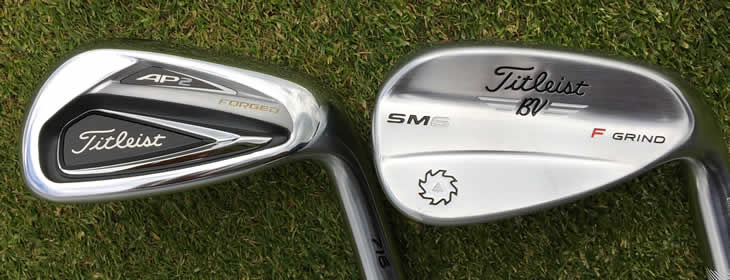
Around the green the Vokey scores highly as the feel for chips and pitch and runs is much greater than the AP2. The extra spin of the Vokey on shorter shots is more noticeable and gives a little check control, whereas the AP2 is inclined to run out more.
However for me the full shot advantages of the set wedge probably outweigh the feel advantages around the green of the specialist wedge, because the 46° club will be used more for approaches and other higher lofted wedges used more around the green.
Choosing The Right Gap Wedge
One of the things designer Bob Vokey recommends for his wedges is a slightly softer S200 shaft than the standard S300 found in most other irons as at the slower swing speeds he believes it gives more feel and control.
Now that we are at the 50° loft the types of shots are more varied so as well as testing both clubs with the set shaft, I also added in a Vokey with the stock S200 wedge flex shaft.
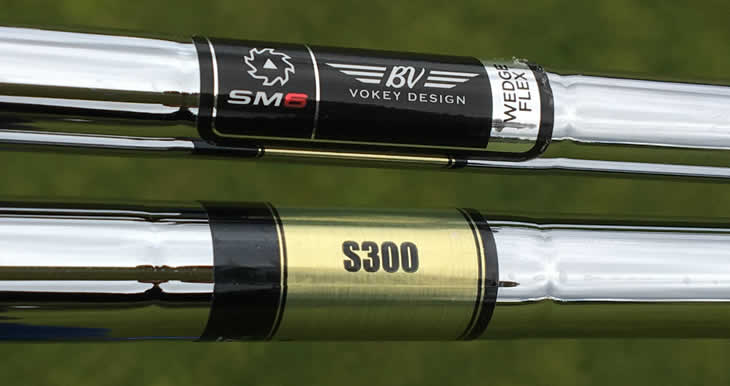
The Vokey with the wedge shaft did feel a little lighter and you would have to judge whether this change suited you. Whilst I would sometimes use this loft to pitch into greens, this is again mainly a full shot club and in this regard I preferred the Vokey with the set shaft over the wedge shaft because the weight felt more consistent with the rest of my bag.
With more loft on the club then the difference in forgiveness between the Vokey and the AP2 in the set shafts was less and for distance and accuracy there was relatively little to choose between them.
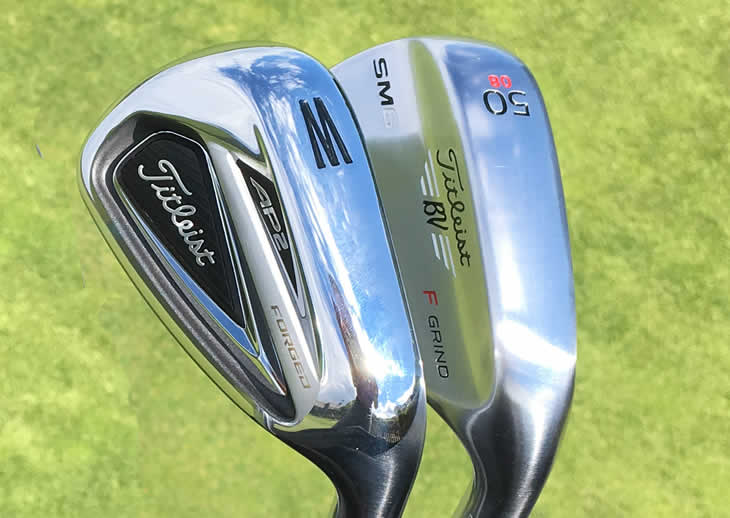
The AP2 was flying a little higher and not sitting down quite as quickly as the Vokey, but the real difference was the sound and feel. The Vokey just felt better for chips around the green and sounded sharper.
The AP2 W wedge sounded more muted, felt a bit lighter and the bounce on the wider sole did not seem to engage as much with the turf as a specialist wedge.
Conclusion
I have had long debates with manufacturers about whether you should use your set shaft in your specialist wedges as sometimes it works and sometimes it doesn't.
In these Titleist clubs it did work in both 46° and 50° and my feeling is that if you are going to use a wedge more for full shots than half shots then you should have the set shaft adjusted for length and lie as it will keep the consistency of feel.
For higher lofted wedges that you use predominantly for half shots and touch shots around the green, then I think that is down to personal preference between the set and wedge shafts depending on the brand of wedge you are using.
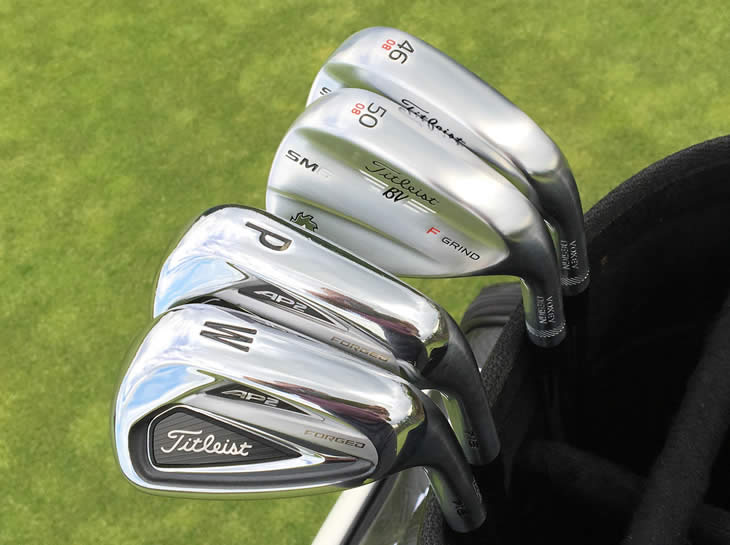
In this example, I would go for the set wedge at 46° for the forgiveness and then the specialist wedge with the set shaft at 50° for the feel and control. Whilst other set ups may go further individually, this combination also keeps the 10 yard gap between these two wedges in my bag to ensure I have all distances covered.
The key as always is to be fitted by an expert and specialist wedge brands like Titleist will be able to take you through this process as part of their custom fitting program.